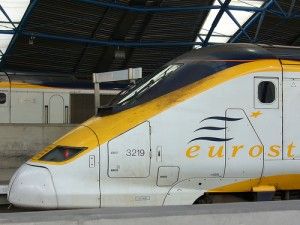Riding The Rails
A few days ago I was on the Eurostar train between London and Paris – glancing out the window enjoying the scenario. The reason we were taking the train was because of the extra security (and corresponding hassles) with flying in and out of London these days. I haven’t taken the train to Paris in

A few days ago I was on the Eurostar train between London and Paris – glancing out the window enjoying the scenario. The reason we were taking the train was because of the extra security (and corresponding hassles) with flying in and out of London these days. I haven’t taken the train to Paris in years and was familiar and comfortable with flying in and out of Heathrow. I have to say though, the train was quite pleasant and now a serious contender whenever I have go between European cities serviced by the Eurostar. As I think about it, I probably would have never considered the train had there not been a barrier to my normal mode of transportation. As a result of the barrier, a competitor to the airlines has had the opportunity to win a fan.
How many times have we consciously or unconsciously switched from a loyal product or brand because of a barrier that emerged?
In the case of the airlines, it’s not a barrier they created but one they have to live with. Yet these barriers lowered what marketing researchers called my “switching cost”. Now there really wasn’t a monetary cost to my decision to take the train but there was a convenience cost (positive) and a hassle cost (negative) that lowered the barrier to the point were I did something out of the ordinary.If you have a loyal customer base, what are you doing to keep the switching cost high (e.g. extreme convenience, minimal hassle) so that a competitor can’t steal them?
If you are the competitor, what are you doing to reduce the switching cost (e.g. take away on of the hassles when using your competitors product) so that customers will move to your product or service?
In my case, and I’m assuming in most others day-to-day activities, the competitive offering can’t just be a little better. It must be significantly better (or the current offering significantly worse) to gain the momentum for me to switch.And switch I did — all from a pleasant train ride through the French countryside ….Flikr photo from ryu-one




